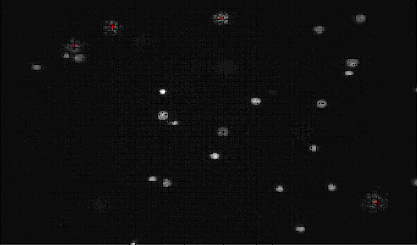
Low power scan (Prescan) is done at 10X magnification to find the location of the metaphases. It takes around 360 – 400 images to cover the entire slide. Each image covers 930 microns in X direction and 695 microns in the Y direction. There is an overlap of 30 microns in X direction and 45 microns in Y direction so that no metaphases are missed because of them being at the corner of image.

Stage is moved to the top left corner inside the cover slip, and images are taken in a column wise order. For each image taken the stage moves 900 microns in Y direction. Once the first column of images are taken, the stage moves by a distance of 650 microns in X direction and goes to the top of cover slip to take the images of second column. Since the stage is always moving in the same direction while taking images, this will account for backlash in the movement of stage.
Image processing algorithm used to find the metaphases in the image is a Matlab script Metfinder.m. When seen at 10X magnification, metaphases will be seen as densely packed dots, whereas the nuclei will be relatively large in size. Metaphase finder algorithm makes use of this fact to remove all the objects in the image which are more than a certain size. Then it finds metaphases depending on the number of closely spaced small size dots. Total number of metaphases that can be found on each slide varies, some slides may contain around 450 metaphases, and some other slides may contain only 200 metaphases. Coordinates of the metaphases found are converted from pixel co-ordinates to stage co-ordinates, and are stored in a file.
It takes around 2 to 3 seconds for processing each image to find metaphases using Metfinder.m Matlab script, and 40 to 45 minutes to pre scan the entire slide. A sample output of the metfinder.m output is given below.

The center of Metaphases are marked with red cross